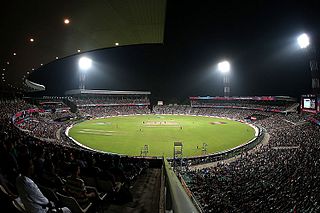It is proposed that this article be deleted because of the following concern:
If you can address this concern by improving, copyediting, sourcing, renaming, or merging the page, please edit this page and do so. You may remove this message if you improve the article or otherwise object to deletion for any reason. Although not required, you are encouraged to explain why you object to the deletion, either in your edit summary or on the talk page. If this template is removed, do not replace it . The article may be deleted if this message remains in place for seven days, i.e., after 14:56, 7 January 2019 (UTC). Nominator: Please consider notifying the author/project: {{subst:proposed deletion notify |Thomas Jure|concern=Non first-class cricketer, fails [[WP:CRIN]] and the reliable sources to establish any further notability are few and far between from the mid-1700s.}} ~~~~ |
Thomas Jure (dates of birth and death unknown) was a noted English cricketer of the mid-18th century who played for the famous London Cricket Club and also for All-England.

Cricket is a bat-and-ball game played between two teams of eleven players on a field at the centre of which is a 20-metre (22-yard) pitch with a wicket at each end, each comprising two bails balanced on three stumps. The batting side scores runs by striking the ball bowled at the wicket with the bat, while the bowling and fielding side tries to prevent this and dismiss each player. Means of dismissal include being bowled, when the ball hits the stumps and dislodges the bails, and by the fielding side catching the ball after it is hit by the bat, but before it hits the ground. When ten players have been dismissed, the innings ends and the teams swap roles. The game is adjudicated by two umpires, aided by a third umpire and match referee in international matches. They communicate with two off-field scorers who record the match's statistical information.
The original London Cricket Club was formed by 1722 and was one of the foremost clubs in English cricket over the next four decades, holding important match status. It is closely associated with the Artillery Ground, where it played most of its home matches.
Known to have been a good batsman, Jure is first recorded on 9 July 1747 playing for Robert Colchin's XI versus William Hodsoll's XI at the Artillery Ground. The match involved numerous leading players of the day. [1]
Robert "Long Robin" Colchin was a highly influential professional English cricketer and match organiser of the mid-Georgian period at a time when the single wicket version of the game was popular. He was born at Chailey, East Sussex and died at Deptford.
William Hodsoll, was a noted English cricketer of the mid-Georgian period. Hodsoll lived at Dartford for some years and was a tanner.

The Artillery Ground in Finsbury is an open space originally set aside for archery and later known also as a cricket venue. Today it is used for military exercises, rugby and football matches. It belongs to the Honourable Artillery Company (HAC), whose headquarters, Armoury House, overlook the grounds.
Jure was a noted single wicket competitor and, later in the 1747 season he played in a high-stakes "threes" tournament that also included Robert Colchin, John Harris, Val Romney, Stephen Dingate and Richard Newland. [1]
The 1747 English cricket season was the fourth season following the earliest known codification of the Laws of Cricket.
Valentine "Val" Romney was an English professional cricketer who played first-class cricket during the 1740s. A specialist batsman, he was mainly associated with Kent but also represented All-England. Although information about his career is limited by a lack of surviving data, he is known to have made 11 single wicket and 14 first-class appearances between 1743 and 1751.
Stephen Dingate was a leading English cricketer of the mid-Georgian period. He almost certainly began playing in the 1720s and was one of the best known players in England through the 1740s.
Jure is last noted in an important match in June 1749. His career therefore seems to have been short, but there is no doubt he was deemed good enough to play at the highest level and must have been a leading player, if only for a few seasons. [2]